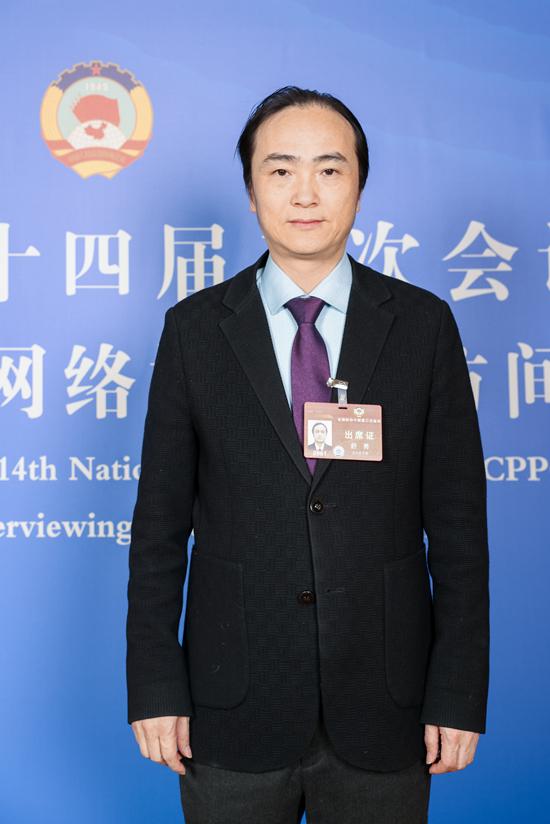
 0 Comment(s)
0 Comment(s) Print
Print E-mail China.org.cn, March 4, 2024
E-mail China.org.cn, March 4, 2024Renowned artist and one of China's top political advisors, Shu Yong, has called for the creation of more influential national cultural icons to strengthen China's global soft power.

Shu Yong, a member of the National Committee of the Chinese People's Political Consultative Conference (CPPCC), poses for a photo. He is attending the annual session of China's top political advisory body in Beijing. [Photo provided to China.org.cn]
Shu, a member of both the National Committee of the Chinese People's Political Consultative Conference (CPPCC) and the China Association for Promoting Democracy, stated, "The rich and vast Chinese civilization represents a unique spiritual symbol for the Chinese nation. It forms the foundation of contemporary Chinese literature and art and acts as a valuable source for artistic innovation."
He emphasized the need to "further highlight the importance of researching and building national cultural symbols and icons of excellence. Efforts should be concentrated on launching a number of national cultural icons that can showcase the Chinese character and enhance the effectiveness of international communication."
He believes that the international recognition and understanding of Chinese culture, as well as the creation of symbols that represent China, are closely related to the country's international relations, economy and diplomatic efforts. In his proposal submitted to the second session of the 14th CPPCC National Committee this year, he argues that this endeavor should be prioritized as a key national strategic initiative, requiring strong leadership and meticulous planning to maintain focus. His proposal advocates for an increased focus on developing national cultural icons, considering them crucial for spreading Chinese culture worldwide and effectively communicating China's story.
His numerous works serve as prime examples. For instance, his renowned large-scale sculpture, the "Golden Bridge on Silk Road," uses the universally recognized cultural symbol of a bridge, intertwining it with the Belt and Road Initiative. Shu drew inspiration from Zhaozhou Bridge, an architectural marvel dating back 1,400 years, to innovatively celebrate traditional Chinese culture. The sculpture has become a symbolic feature at significant Chinese diplomatic events, such as the Belt and Road Forum for International Cooperation and the inaugural Conference on Dialogue of Asian Civilizations.

Photo taken on May 13, 2017 shows the "Golden Bridge on Silk Road" structure outside the National Convention Center in Beijing, the capital of China. [Photo/Xinhua]
"Cultural dissemination abroad is a long-term, complex, and arduous task," said Shu, who is also a council member of the China Artists Association. "Creating icons that represent China's image requires rich and substantial content for support. It involves not just introducing these icons, but also implementing a series of complementary promotional strategies to extend their global reach, allowing the world to perceive and become familiar with them."
The influence and biases of Western media regarding China currently present significant challenges in effectively disseminating China's voice, according to the artist. Research so far has revealed that, despite considerable efforts to construct national cultural icons, difficulties remain in their global promotion and impact. These include a lack of contemporary relevance, limited reach, and insufficient depth in communication.
He suggested that mainstream media and cultural administration authorities should consistently and extensively utilize and promote these icons, and award internationally influential artworks that reflect contemporary values and ideals. Additionally, diplomatic, cultural, and tourism departments should support and encourage artists to hold touring exhibitions worldwide.
He also urged provinces and cities with the appropriate conditions to create scenarios and sites for these icons to be displayed prominently and become more deeply embedded in the public consciousness. They should also build public parks and squares where these icons can be prominently featured.